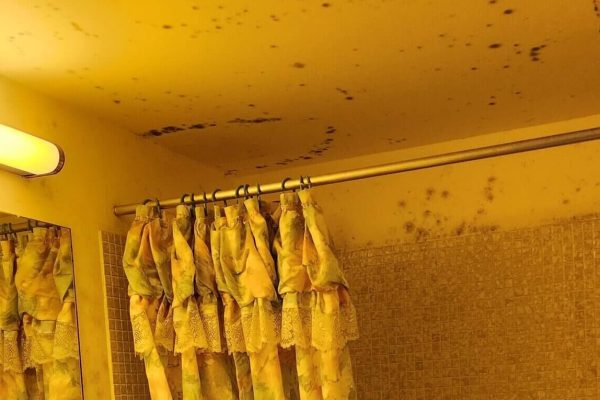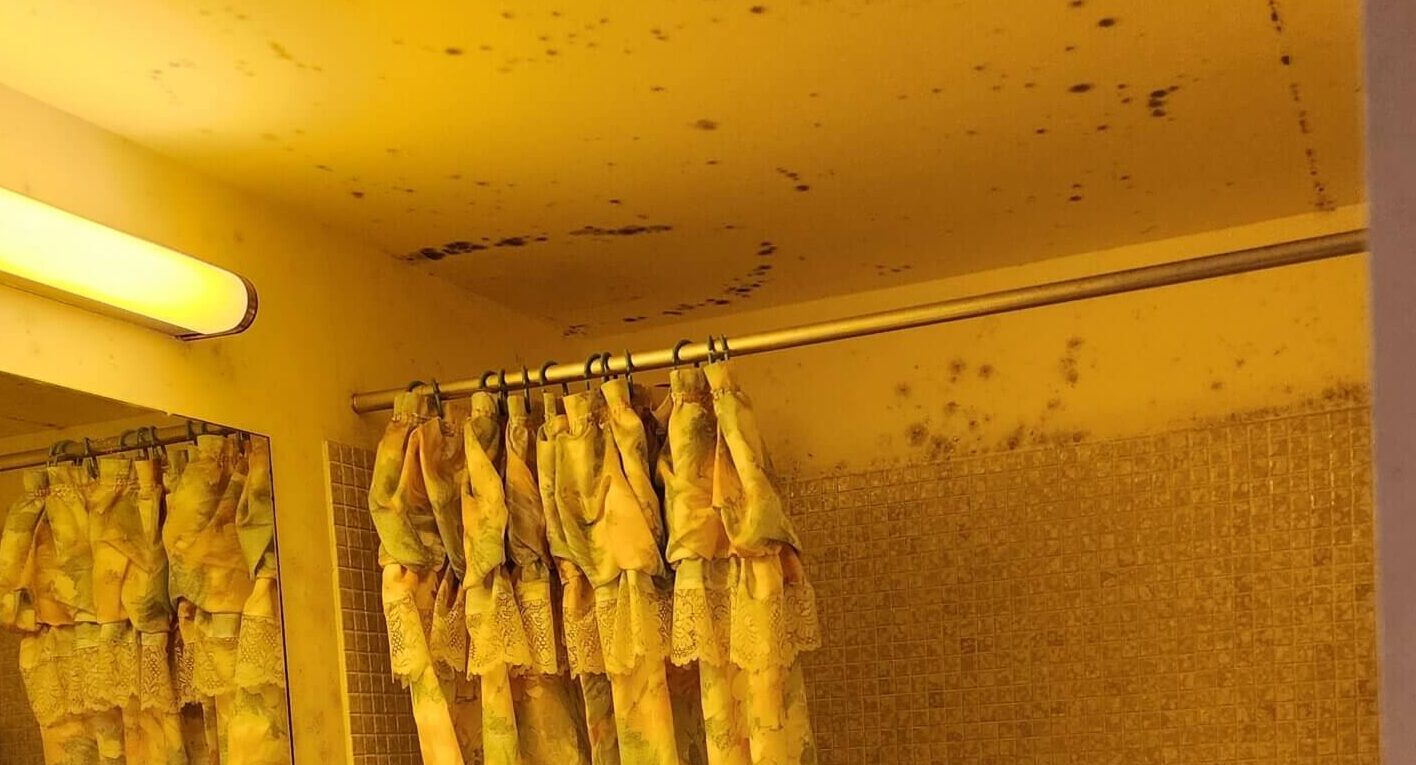How to Get Rid of Orange Mold in Your Home
In Florida’s humid climate, orange mold appears on wood, tile, food, and even inside dishwashers. If ignored, it spreads quickly and can cause musty odors, damage surfaces, and trigger breathing issues for sensitive individuals.
The good news is that you don’t need harsh chemicals or professional mold remediation services to resolve the issue. In most cases, you can get rid of orange mold in your home by scrubbing it with vinegar or hydrogen peroxide, removing any contaminated items, and fixing moisture problems to keep it from coming back.
This guide explains how to identify, clean, and prevent orange mold step by step.
However, if mold has already spread or keeps coming back, call Tip Top Plumbing & Restoration at 954-289-3110 for fast mold removal in Pembroke Pines, FL, and nearby areas.
How to Clean Orange Mold Step-by-Step
Step 1: Protect yourself
Wear gloves, a mask, and safety glasses. Mold spores can irritate your skin, eyes, and lungs, especially if you’re sensitive or allergic.
Step 2: Remove contaminated items
Throw away porous materials like paper, food, and heavily soaked wood or fabric. These items are difficult to clean thoroughly and may cause the mold to return.
Step 3: Clean the affected area
Spray the moldy surface with white vinegar or 3% hydrogen peroxide. Let it sit for at least 10 minutes. Then, scrub with a brush or sponge until all visible mold is gone.

Step 4: Rinse and dry
Wipe the area with clean water, then dry it using fans or a dehumidifier. Mold will grow back if moisture stays in the area.
Step 5: Fix the moisture problem
Check for leaks, poor ventilation, or standing water. Repair pipes, improve airflow, and use a dehumidifier to reduce humidity levels.
When Should You Call a Professional for Orange Mold Removal?
While small patches of orange mold can often be cleaned with household products, some situations require expert help. If the mold keeps coming back or covers a large area—more than 10 square feet—it’s time to call a licensed mold remediation specialist.
You should also contact a professional if:
- You notice mold inside walls, ceilings, or HVAC systems
- The mold has caused structural damage to wood or drywall
- You or your family experience health issues like coughing, sneezing, or headaches
- You smell a persistent musty odor but can’t find the source
Professionals use advanced tools to detect hidden moisture, contain the mold safely, and remove it without spreading spores through your home.
What Causes Orange Mold Growth?
Orange mold grows where moisture, warmth, and organic material are present. This mold often appears in damp kitchens, bathrooms, and basements. It’s also common around leaky pipes, water filters, dishwashers, and areas with past water damage.
Unlike black mold, orange mold tends to look slimy or soft. It can appear in shades of orange, pink, or rust and may spread quickly on wood, tile, or even leftover food. Molds thrive when surfaces stay wet or aren’t washed and dried properly.
Is Orange Mold Dangerous?
Orange mold may not be as toxic as black mold, but it can still cause serious problems, especially for people with asthma, allergies, or weakened immune systems. Mold spores released into the air can irritate the eyes, nose, and throat and may lead to coughing, sneezing, or other respiratory symptoms.
Orange mold often goes unnoticed in bathrooms and showers until it creates a strong smell or visible slime.
Certain orange mold species, including slime mold and Fuligo septica, thrive in moist environments and can spread fast. Though not always classified as dangerous fungi, orange mold can damage wood, tile, and grout, and even lead to long-term contamination if not removed quickly.
How to Prevent Orange Mold from Coming Back?
Stopping orange mold growth starts with moisture control and regular cleaning. After completing mold removal, follow these steps to keep your home mold-free:
- Fix leaks fast: Repair any plumbing problems near sinks, tubs, showers, or appliances. Even a slow drip can create the perfect environment for fungus and molds.
- Ventilate your bathroom and kitchen: Use exhaust fans during and after showers or cooking. Good airflow reduces humidity, stopping mold before it starts.
- Dry surfaces daily: Use a towel or squeegee to wash and dry tiles, grout, and windows. Mold can grow on damp surfaces within 24–48 hours.
- Clean regularly with vinegar or hydrogen peroxide: These natural cleaners kill mold spores without harsh chemicals. Avoid bleach, which may not reach deep mold roots.
- Change water filters and inspect for hidden water damage: A clogged water filter or old water softener system can leak, feeding unseen mold problems behind walls or under sinks.
For ongoing prevention, consider routine mold testing, especially if your home has a history of water damage or musty odors. Catching mold early makes it easier to manage and less costly to treat.
Take Control Before a Small Mold Problem Gets Worse
Orange mold may start small, but it can quickly take over if ignored. Staying proactive with routine cleaning, humidity control, and early detection helps keep your home safe and healthy.
If you suspect deep mold growth, a remediation service can pinpoint hidden moisture, detect airborne spores, and stop the spread before the problem worsens.
Call 954-289-3110 to schedule a mold inspection with Tip Top Plumbing & Restoration in Pembroke Pines, FL, and surrounding areas. Our trusted mold removal services comply with IICRC guidelines and are available 24/7 for your safety and peace of mind.
FAQs
How do you stop orange mold in the shower?
To stop orange mold in the shower, dry all surfaces after use and run an exhaust fan to reduce humidity. Clean regularly with vinegar or hydrogen peroxide to kill mold spores and prevent buildup.
Can a water filter cause mold growth?
Yes, a dirty or clogged water filter can trap moisture and organic material, creating the perfect conditions for mold growth. Replace filters as recommended and inspect for hidden leaks around the system.
How do you clean slime mold off surfaces?
Scrape off the visible slime mold, then clean the surface with white vinegar or hydrogen peroxide. Rinse thoroughly and dry the area completely to prevent it from coming back.
How do you get rid of an orange mold problem on plants?
Orange mold on plants is often a fungus that thrives in damp, humid conditions. Remove affected leaves, improve air circulation, and avoid overwatering. You can also spray plants with a mild baking soda and water solution or use a natural fungicide approved for garden use.

